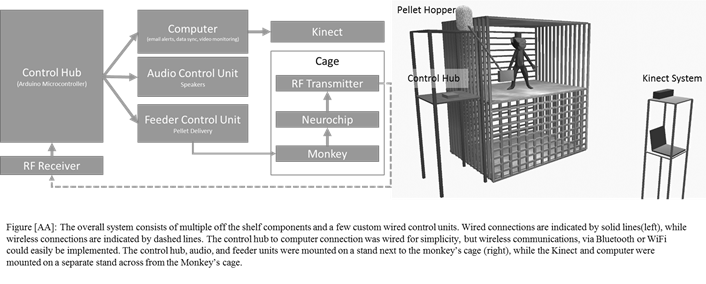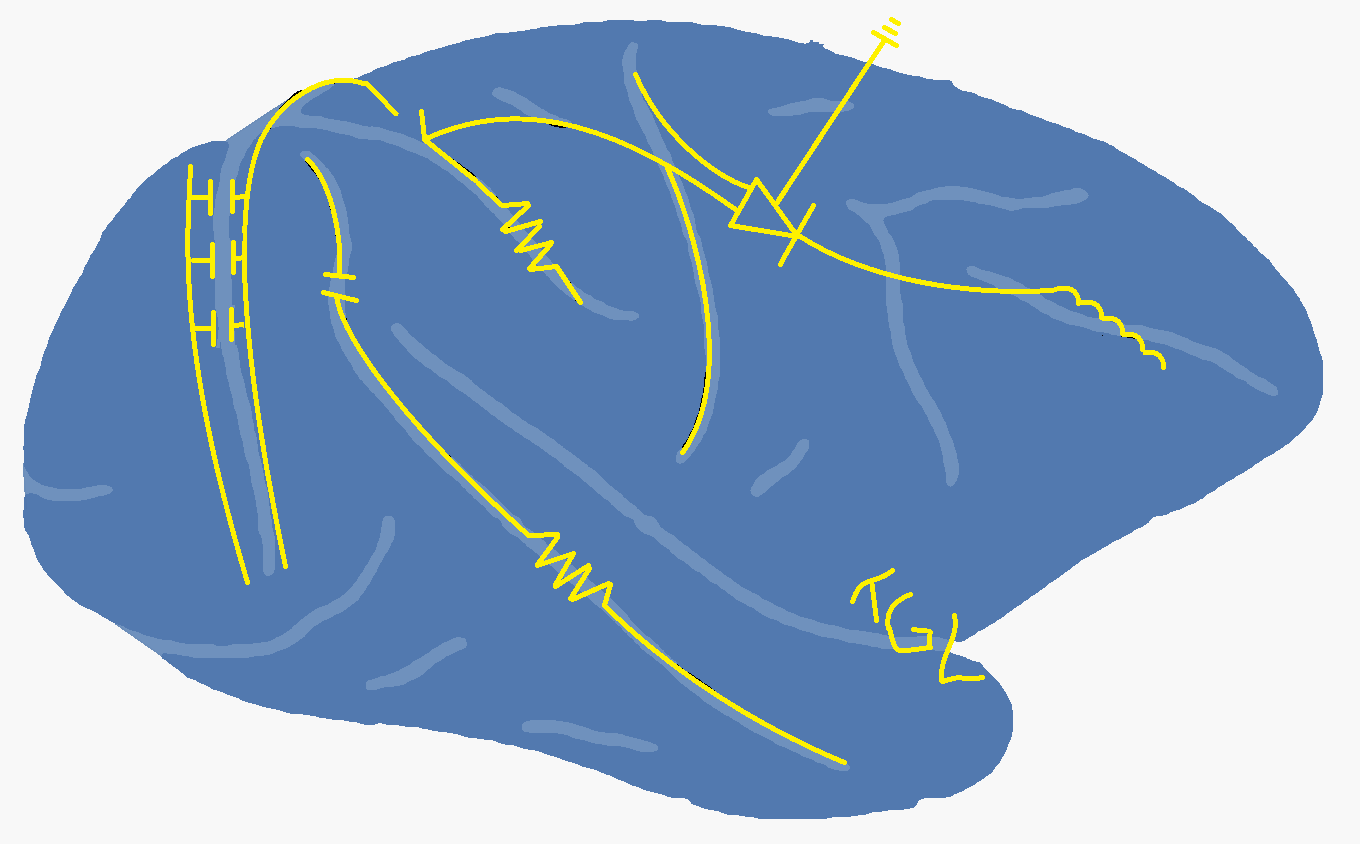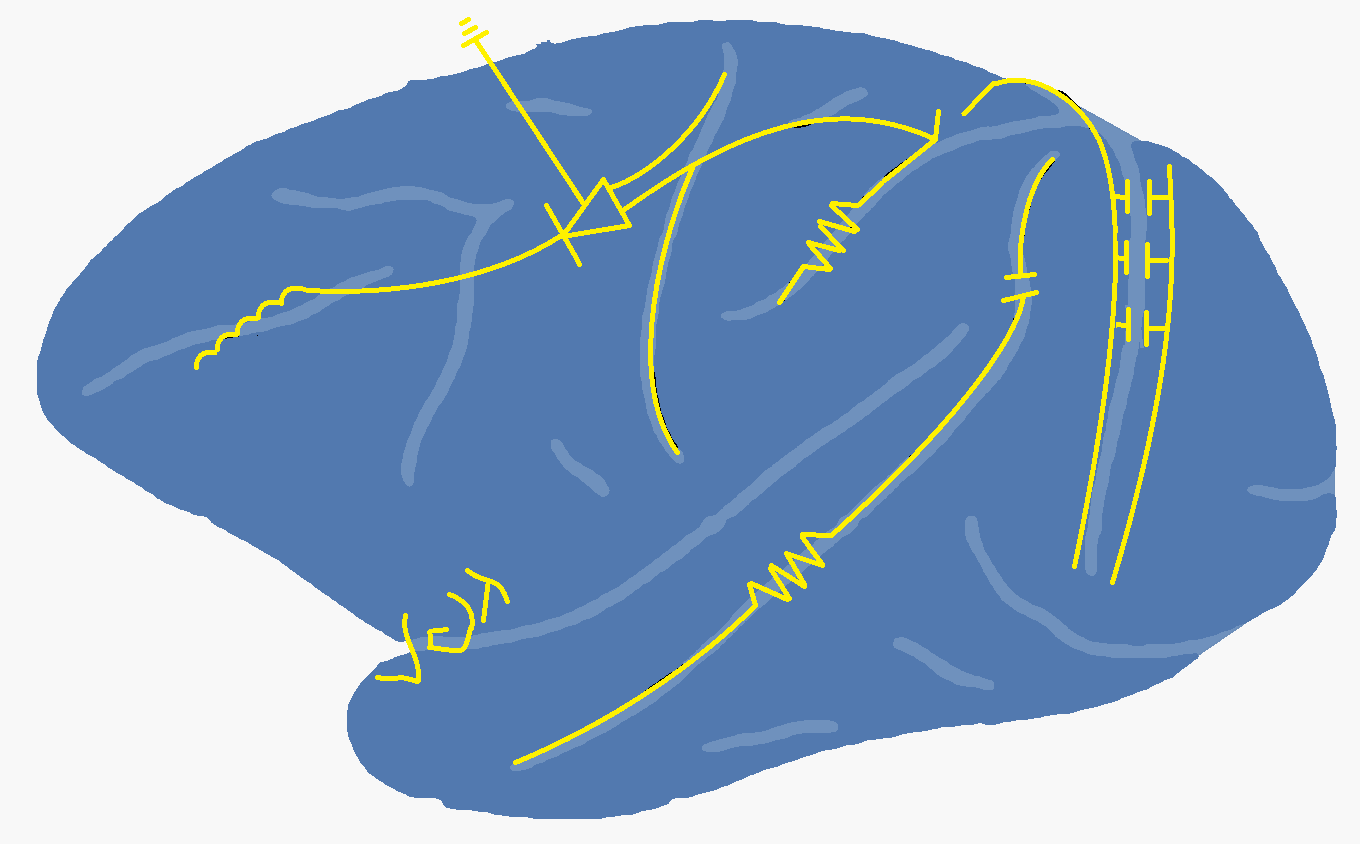Wireless Feeder for rewarding freely-behaving animal subjects
Background
Behavioral neuroscience research has often used non-human primates as the ideal animal model due to their behavioral and cognitive similarities to humans(Anderson, 2008). Relationships between neural activity and behavior can be studied in controlled environments to elucidate, for example, how motor neuron firing related to muscle activity (Fetz and Finocchio, 1975) or how populations of neurons relate to complex reach and grasp movements(Vargas-Irwin et al., 2010). In these experiments the monkey typically sits in specially designed chair or box used for restraint and transport. The monkey is normally “head-fixed” to both protect the recording equipment and reduce noise in the neural recordings. For studying behavior during neural recordings, experiments have traditionally used mechanical systems such as joy-sticks(Ifft et al., 2012) or torque tracking devices(Moritz and Fetz, 2011), invasive muscle activity recordings(Fetz and Finocchio, 1975, Griffin et al., 2008) ,or video monitoring systems positioned carefully over the target behavior(Chen et al., 2009, Vargas-Irwin et al., 2010). These systems offer the benefit of being heavily constrained, allowing for precise studies of controlled movements and tasks. However, these systems also limit the animal’s natural movement, hindering the types of movements that can be studied.
In this work, I created and implemented a system to enhance existing free-behavior experiment architecture. We developed an approach that allows for low-latency reward delivery and behavior monitoring using off the shelf, low-cost components. Further, we have created a method that takes the first steps to fully describing a monkey’s natural behavior in its home environment, through an automated motion capture system. We have modified the Neurochip system and created a wirelessly operated feeder that interfaces with the existing experiment architecture to provide low-latency reward based on the monkey’s behavior. Additionally, we have developed novel algorithms for monitoring the animal’s behavior using the Microsoft Kinect, a motion tracking camera system. Finally we show multiple examples of the systems working in tandem in a novel operant conditioning paradigm.

Further Results
The result of this work is currently in preparation for submission to the Journal of Neuroengineering. For further information on this study, or on how to implement this system in your lab: please contact me.
The code base is currently being adapted for distribution. Please check my github page for further details.
Brief References and Further Readings
- Anderson DM (2008) The nonhuman primate as a model for biomedical research. In: Sourcebook of Models for Biomedical Reasearch (Conn, P. M., ed), pp 251-258 Totowa, NJ: Humana.
- Fetz EE, Finocchio DV (1975) Correlations between activity of motor cortex cells and arm muscles during operantly conditioned response patterns. Exp Brain Res 23:217-240.
- Vargas-Irwin CE, Shakhnarovich G, Yadollahpour P, Mislow JM, Black MJ, Donoghue JP (2010) Decoding complete reach and grasp actions from local primary motor cortex populations. J Neurosci 30:9659-9669.
- Ifft PJ, Lebedev MA, Nicolelis MA (2012) Reprogramming movements: extraction of motor intentions from cortical ensemble activity when movement goals change. Front Neuroeng 5:16.
- Chen J, Reitzen SD, Kohlenstein JB, Gardner EP (2009) Neural representation of hand kinematics during prehension in posterior parietal cortex of the macaque monkey. J Neurophysiol 102:3310-3328.
- Moritz CT, Fetz EE (2011) Volitional control of single cortical neurons in a brain-machine interface. J Neural Eng 8:025017.

